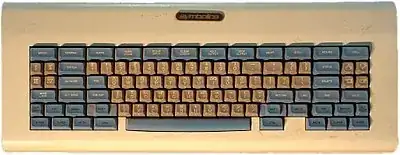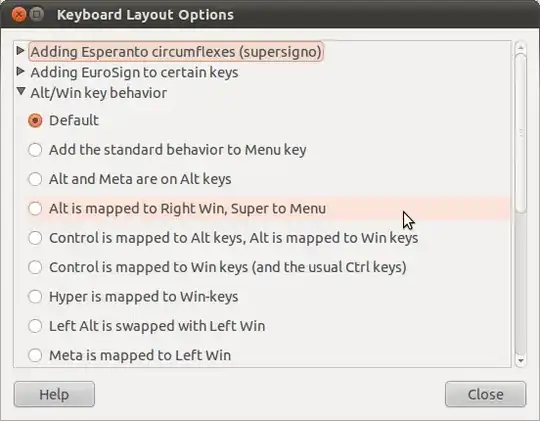Meta, Super and Hyper are modifier keys that modify the key's function. They are specific to the Symbolics Space Cadet Keyboard used on Lisp machines back in the day. Their function is sometimes emulated using other keys.

Meta
The Meta key is not found on modern keyboards. Its use is sometimes emulated with AltGr (on some international layouts) or the right Alt key on the others. In addition:
- Sun keyboards have a meta key (◆) as well
- Emacs calls Esc the Meta key
Super
The Super key is equivalent to  or the ⌘ (command) key. In Ubuntu, it's just another name for
or the ⌘ (command) key. In Ubuntu, it's just another name for  .
.
Hyper
Hyper is the fourth (counting Ctrl) and last modifier on the Space cadet keyboard. In Ubuntu, its function is undefined (I think), but it can be mapped, as in the screen shot above, to  , should it be needed.
, should it be needed.

Sun's keyboard had different modifiers.
Note that GNOME and X.org implement many modifiers. Meta, Super and Hyper are not Linux's way of dealing with any modifier keys, but merely three of them specific to the Space Cadet keyboard. There is also Menu, Compose, AltGr, Greek, Front, X and others.
However, by convention the Windows logo key is called Super, and it is not implemented as yet another modifier by X.org.
Furthermore, the definition of modifier keys depends on:
It's therefore almost impossible to generalise this information. I've tried to be somewhat specific to Gnome/X.org using a Windows-style keyboard with one of the more popular layouts. To test your keyboard, you can run xev - its terminal output will tell you what modifiers have been detected for your keyboard.

The Macintosh keyboard has a completely different set of modifiers
Some additional information:
The Windows key is also sometimes called Meta. E.g. in KDE.
The Alt key is sometimes called Option, as this is its equivalent on Macintosh keyboards
The Compose key (not a modifier, but a dead key), also called Multi, is often mapped to the Menu key or the right Windows key.
The AltGr key I've mentioned is also called a third-level modifier. Each key on the keyboard has, potentially, four characters on it. The first level is the lowercase, then it goes uppercase, Alt + something, and Alt + Shift + something. For example, the four glyphs on my A key are a, A, æ and Æ.
It's all a mess :-)
As they've been addressed in the comments:
The Fn is not really comparable. It's a hardware key that's not directly interfaceable by the operating systems. Pressing Fn and another key causes an entirely different code to be sent to the operating system. Examples for this include XF86AudioMute, XF86Eject and so on. The Operating system can't detect whether fn is pressed or not.
The SysRq key is traditionally a label on the Print Screen key indicating its function if used with the modifier Alt. It is sometimes, especially on newer notebooks, mapped to Fn+Alt+Print. In Linux, it provides a few Magic shortcuts.


 or the ⌘ (command) key. In Ubuntu, it's just another name for
or the ⌘ (command) key. In Ubuntu, it's just another name for 
